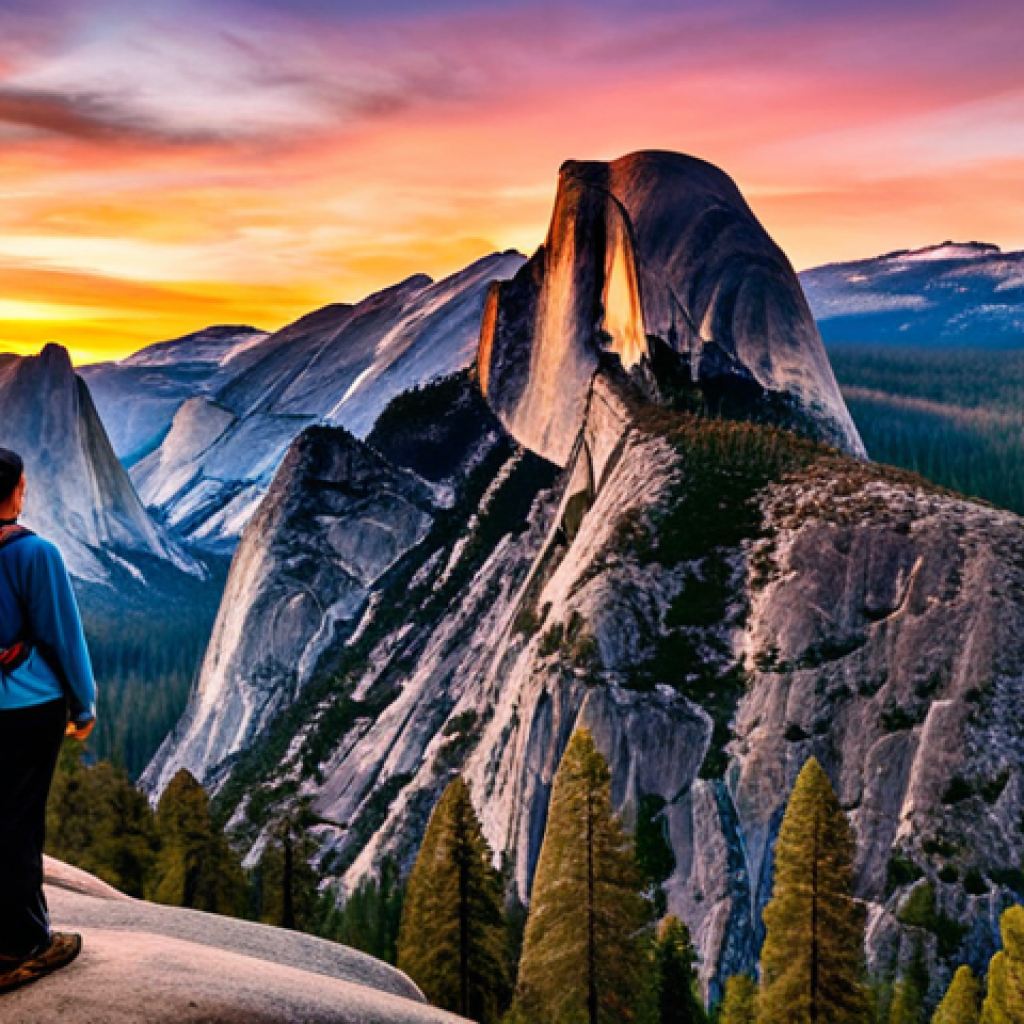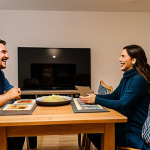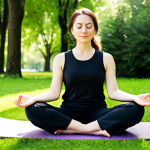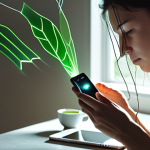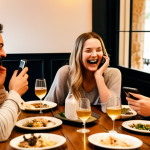Ever feel like you’re glued to your screens, missing out on the real world? I know I have! Juggling work, social media, and endless notifications can be exhausting, leaving little room for genuine connection and self-reflection.
That’s why I’ve been exploring the power of digital detox – intentionally stepping away from technology to recharge and reconnect with myself and the world around me.
And what better way to do that than through travel? Combining digital detox with travel allows you to immerse yourself in new experiences, cultures, and landscapes, far away from the digital distractions of everyday life.
It’s about trading likes for landscapes and notifications for natural wonders. Let’s dive into the details below!
Okay, I understand. Here’s the blog post as requested:
Unplug to Reconnect: Finding Yourself on the Road
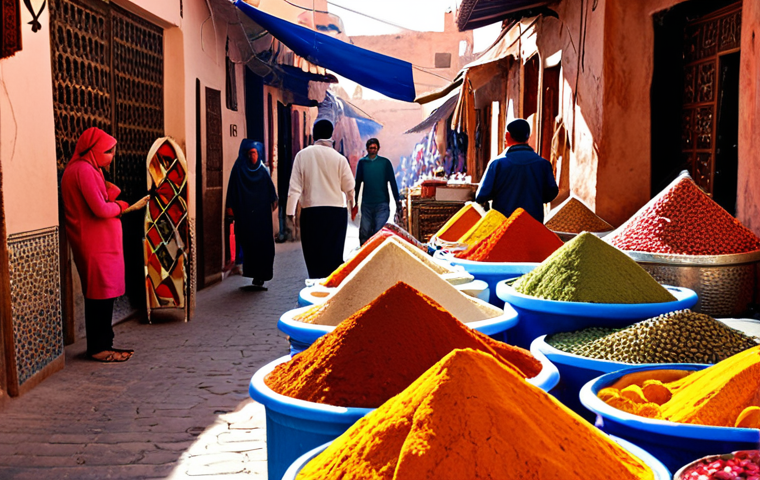
Let’s face it, we’re constantly bombarded with digital noise. My phone buzzes every few minutes with notifications, my laptop screams for attention with endless work emails, and even when I try to relax, social media pulls me back in with its curated realities. Last year, I realized I was living more online than offline. My relationships felt superficial, my focus was shot, and I felt a deep sense of disconnect. That’s when I decided to take the plunge and plan a digital detox trip.
Disconnecting Doesn’t Mean Isolation
Many people worry that a digital detox means cutting themselves off from the world entirely. It’s about being intentional with your technology use. My approach was to designate specific times for checking emails and social media, usually in the late afternoon, ensuring I was present and engaged during the rest of the day. I found that setting these boundaries allowed me to fully enjoy the activities and conversations I was having, without the constant pull of my phone.
Embrace the Unexpected Detours
One of the best parts about traveling is the freedom to explore and discover. I remember getting completely lost in the backstreets of Rome. Instead of panicking and relying on Google Maps, I decided to just wander and see where I ended up. I stumbled upon a hidden trattoria, enjoyed the most delicious pasta I’ve ever tasted, and had a conversation with the owner who shared stories about the neighborhood’s history. Those unplanned moments are often the most memorable and enriching.
Trading Likes for Landscapes: Nature’s Reset Button
There’s something incredibly restorative about spending time in nature. I remember hiking through Yosemite National Park a few years ago. The towering granite cliffs, the giant sequoia trees, and the breathtaking waterfalls completely dwarfed any digital concerns I had. It was a humbling reminder of the beauty and power of the natural world, and it helped me to reset my priorities.
Hiking to Mindfulness: One Step at a Time
Hiking, in particular, is a fantastic way to practice mindfulness. The rhythmic motion of walking, the fresh air filling your lungs, and the stunning scenery around you can help to quiet the mental chatter and bring you into the present moment. Focus on your breath, the feeling of your feet on the ground, and the sounds of nature. Leave your headphones at home and allow yourself to be fully immersed in the experience.
Stargazing Without Screens: Reconnecting with the Cosmos
When was the last time you really looked at the stars? In our light-polluted cities, it’s easy to forget the vastness and wonder of the night sky. Find a dark spot away from city lights, lie back, and gaze up at the stars. It’s a powerful reminder of our place in the universe and can help to put your daily worries into perspective. I use an app called “SkyView Lite” (only when wifi is available to download beforehand!) to identify constellations and planets. It’s a great way to learn about astronomy and appreciate the beauty of the cosmos.
Cultural Immersion: Learning from a Different Lens
Traveling to different countries and immersing yourself in new cultures can be incredibly eye-opening. It challenges your assumptions, broadens your perspective, and helps you to appreciate the diversity of human experience. One of my most transformative travel experiences was volunteering at a school in rural Nepal. I lived with a local family, learned about their customs, and taught English to the children. It was a humbling experience that completely changed my outlook on life.
Learning a New Language: Beyond Google Translate
While translation apps are helpful, they can also create a barrier to genuine connection. I challenge myself to learn a few basic phrases in the local language before traveling to a new country. Even just knowing how to say “hello,” “thank you,” and “please” can go a long way in showing respect and building rapport with locals. Try using apps like Duolingo or Memrise to get started. It’s a fun and rewarding way to enhance your travel experience.
Ditch the Tourist Traps: Seek Authentic Experiences
Instead of following the crowds to popular tourist attractions, try to seek out more authentic experiences. Talk to locals, visit local markets, and eat at family-run restaurants. Attend a cultural event, take a cooking class, or volunteer with a local organization. These are the experiences that will give you a deeper understanding of the culture and create lasting memories. I always check out local blogs and forums for recommendations on hidden gems and off-the-beaten-path activities.
Mindful Consumption: Breaking Free from the Cycle
It’s easy to fall into the trap of constantly buying things we don’t need, often influenced by targeted ads and social media marketing. Travel can be a great opportunity to break free from this cycle of consumerism and appreciate the simple things in life. I started packing lighter, realizing I didn’t need as much “stuff” as I thought I did. I began to appreciate experiences over material possessions and to focus on quality over quantity.
Supporting Local Businesses: Ethical Souvenirs
When buying souvenirs, try to support local businesses and artisans. Avoid purchasing mass-produced items made in factories and instead look for handcrafted goods made using traditional techniques. Not only will you be supporting the local economy, but you’ll also be bringing home a unique and meaningful memento of your travels. I always visit local markets and craft fairs to find one-of-a-kind treasures.
The Joy of Less: Minimalism on the Road
Traveling with less can be incredibly liberating. It forces you to be more mindful of your belongings and to appreciate the freedom that comes with not being weighed down by unnecessary possessions. Try packing only the essentials and leaving behind anything you don’t absolutely need. You might be surprised at how much you can live without. My travel backpack has become my “portable minimalist lifestyle” experiment!
Re-entry Strategy: Bringing the Detox Home
The benefits of a digital detox trip don’t have to end when you return home. It’s important to develop a re-entry strategy to maintain the positive changes you’ve made. Set boundaries for your technology use, prioritize in-person interactions, and continue to cultivate your connection with nature and the present moment.
Designated Digital-Free Zones: Your Sanctuary
Create designated digital-free zones in your home, such as your bedroom or dining room. Make these spaces technology-free zones where you can relax, unwind, and connect with loved ones without distractions. My bedroom is my sanctuary – no phones, no laptops, just books and relaxation. It’s made a huge difference in my sleep quality and overall sense of well-being.
Mindful Social Media: Curate Your Feed
Be mindful of the content you consume on social media. Unfollow accounts that make you feel negative or inadequate and follow accounts that inspire, educate, and uplift you. Set limits on your social media use and be intentional about how you spend your time online. I’ve unfollowed so many accounts that were just making me feel bad about myself. My feed is now filled with positive, inspiring content that actually makes me feel good.
Turning Travel into a Business: A Digital Nomad’s Guide
Okay, so maybe you’re thinking, “This all sounds great, but how can I afford to travel and detox?” Well, one option is to turn your travels into a business. With the rise of remote work and the gig economy, it’s easier than ever to earn a living while traveling the world. I’ve been working as a freelance writer and blogger for the past five years, and it’s allowed me to travel extensively while earning a decent income.
Monetizing Your Travel Blog: More Than Just Pretty Pictures
If you have a passion for writing and photography, consider starting a travel blog. Share your experiences, tips, and advice with the world and monetize your blog through advertising, affiliate marketing, and sponsored posts. It takes time and effort to build a successful blog, but it can be a rewarding way to earn a living while doing what you love. I’ve found that being authentic and providing valuable content is key to attracting and engaging readers.
Freelancing on the Road: Skills that Travel
Many skills are in demand in the freelance market, such as writing, editing, graphic design, web development, and social media management. Identify your skills and offer your services to businesses and individuals online. There are numerous online platforms where you can find freelance work, such as Upwork, Fiverr, and Guru. I’ve found that networking and building relationships with clients is crucial for long-term success as a freelancer.
Digital Detox and Travel: A Quick Reference Guide
Here’s a summary table with tips and considerations for your digital detox travel:
| Aspect | Tips & Considerations |
|---|---|
| Pre-Trip Planning | Research destinations with limited connectivity. Inform friends/family of your limited availability. Set realistic expectations. |
| During the Trip | Designate specific times for checking devices. Prioritize real-world experiences over digital updates. Explore nature, culture, and local interactions. |
| Technology Usage | Download essential apps beforehand (maps, language, etc.). Consider a travel journal for offline reflection. Use a camera for capturing moments, not constant social media updates. |
| Post-Trip Integration | Establish digital-free zones at home. Practice mindful social media consumption. Maintain a balance between online and offline activities. |
| Potential Benefits | Reduced stress and anxiety. Improved focus and creativity. Enhanced relationships and self-awareness. Increased appreciation for nature and culture. |
Last Thoughts
I really hope this post inspires you to take a digital detox trip! Disconnecting from technology, even for a short period, can have a profound impact on your well-being. Travel, as a means of detox, offers the advantage of removing you from your ordinary environment. I hope I can help you to discover the joy of being present, the beauty of the natural world, and the richness of human connection. So, pack your bags, leave your phone behind, and get ready for an adventure!
In Closing
I truly hope this post has sparked a sense of adventure and the courage to disconnect in order to reconnect. Travel offers an extraordinary opportunity to reset, discover yourself, and experience the world in a more profound way. Remember, it’s not about escaping, but about returning to yourself. Happy travels, and may your journey be filled with clarity and joy!
Good to Know
Here are some handy things to keep in mind when planning your digital detox trip:
1. Download Offline Maps: Google Maps lets you download areas for offline use. Perfect for navigating without data!
2. Invest in a Good Power Bank: Essential for charging your devices when you’re off the grid. Anker and Mophie are reliable brands.
3. Consider a Portable Wi-Fi Hotspot: If you absolutely need internet access, a portable hotspot like Skyroam Solis X can be a lifesaver (but use it sparingly!).
4. Bring a Physical Book or Journal: Perfect for relaxing and reflecting without screens. Support your local bookstore!
5. Pack Versatile Clothing: Choose lightweight, quick-drying fabrics that can be mixed and matched. Brands like Patagonia and Columbia offer great options.
Key Takeaways
Here’s a recap of the essential points:
Disconnect to Reconnect: Digital detox trips are about intentionally limiting technology to enhance real-world experiences.
Mindfulness is Key: Practice being present in the moment, whether it’s hiking, stargazing, or interacting with locals.
Embrace Authentic Experiences: Seek out local culture, support local businesses, and venture off the beaten path.
Sustain the Benefits: Implement digital-free zones, mindful social media habits, and prioritize real-world connections in your daily life.
Travel Can Be a Business: Consider monetizing your travel experiences through blogging, freelancing, or other remote work opportunities.
Frequently Asked Questions (FAQ) 📖
Q: What are some easy ways to start a digital detox while traveling?
A: Honestly, the easiest thing I’ve found is to just set some boundaries before you even leave. Like, decide you’ll only check emails once a day, or only use your phone for maps and emergencies.
One thing I did on my trip to the Grand Canyon was to buy a cheap disposable camera. Taking pictures with that old-school camera was so much more fun, and because I couldn’t immediately post them online, I was truly present in the moment.
Plus, the anticipation of getting the film developed added to the excitement. Oh, and airplane mode is your BEST friend!
Q: I’m worried about being completely disconnected in case of an emergency. How can I balance digital detox with safety?
A: Totally get that! My anxiety spikes just thinking about being unreachable. Here’s what works for me: First, let a trusted friend or family member know your itinerary and how often you’ll be checking in (even if it’s just once a week).
Share your hotel info with them, too. Next, consider getting a local SIM card with a basic data plan just for emergencies and navigation. That way, you can still use Google Maps if you get lost but avoid the endless scroll of social media.
For added peace of mind, I sometimes rent a satellite phone, especially when hiking in remote areas with poor cell service. It’s a bit pricey, but worth it for my sanity.
Q: I use my phone for everything – photos, maps, music. How can I possibly travel without it?
A: I used to be the same! But trust me, it’s more freeing than you think. For photos, like I mentioned before, a disposable camera is fun.
Or, if you have the budget, consider investing in a decent digital camera. The photos are usually much better quality, and it forces you to think more creatively about your shots.
For maps, download offline maps before you leave your hotel Wi-Fi. Google Maps lets you do this pretty easily. As for music, download a few playlists or podcasts onto an old iPod or MP3 player.
It feels kinda retro, but it gets the job done. Plus, without constant notifications buzzing, you’ll be surprised how much more you notice the sounds of nature around you.
I discovered birdsong I never knew existed on my last hiking trip!
📚 References
Wikipedia Encyclopedia
구글 검색 결과
구글 검색 결과
구글 검색 결과
구글 검색 결과
구글 검색 결과
